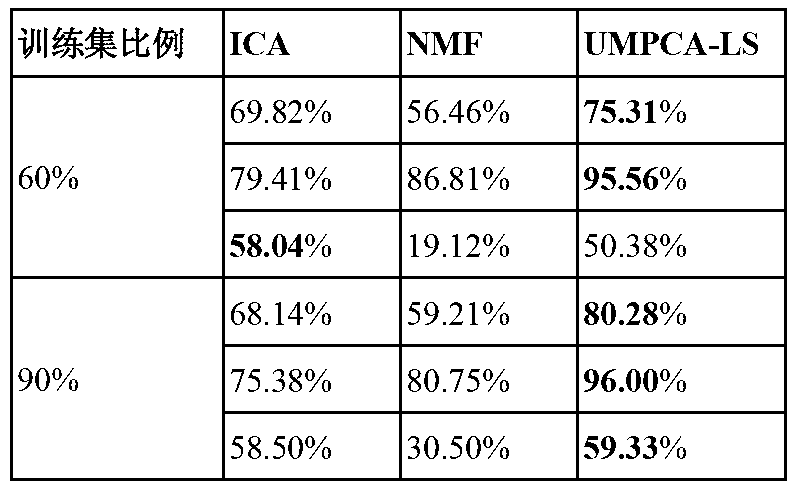Structural nuclear magnetic resonance image processing method used for Alzheimer disease early detection
A technology of Alzheimer's disease and nuclear magnetic resonance, applied in the field of biomedical signal processing, can solve the problems of undersampling, loss of structural information, high order of data, etc., and achieve the effect of improving accuracy
- Summary
- Abstract
- Description
- Claims
- Application Information
AI Technical Summary
Problems solved by technology
Method used
Image
Examples
Embodiment Construction
[0016] The present invention selects Open Access Series of Imaging Studies (OASIS for short, http: / / www.oasis-brains.org ) database as experimental data, 216 individuals with complete information were selected from 416 individuals for the experiment, and were divided into 81 AD patients (CDR>0) and 135 normal people (CDR=0), among them, the normal people over 64 years old are elderly normal people, a total of 65 people. Since the incidence of AD increases significantly with age, the classification results of AD patients and elderly healthy people are specially made to illustrate the effectiveness of the method of the present invention. figure 2 It is the classification result of 81 AD patients and 135 normal people, image 3 It is the classification result of 81 AD patients and 65 elderly normal people.
[0017] The present invention processes AD sMRI data in the form of tensor, combines UMPCA and LS algorithms to perform feature extraction and feature selection on the pre...
PUM
 Login to View More
Login to View More Abstract
Description
Claims
Application Information
 Login to View More
Login to View More - R&D
- Intellectual Property
- Life Sciences
- Materials
- Tech Scout
- Unparalleled Data Quality
- Higher Quality Content
- 60% Fewer Hallucinations
Browse by: Latest US Patents, China's latest patents, Technical Efficacy Thesaurus, Application Domain, Technology Topic, Popular Technical Reports.
© 2025 PatSnap. All rights reserved.Legal|Privacy policy|Modern Slavery Act Transparency Statement|Sitemap|About US| Contact US: help@patsnap.com



